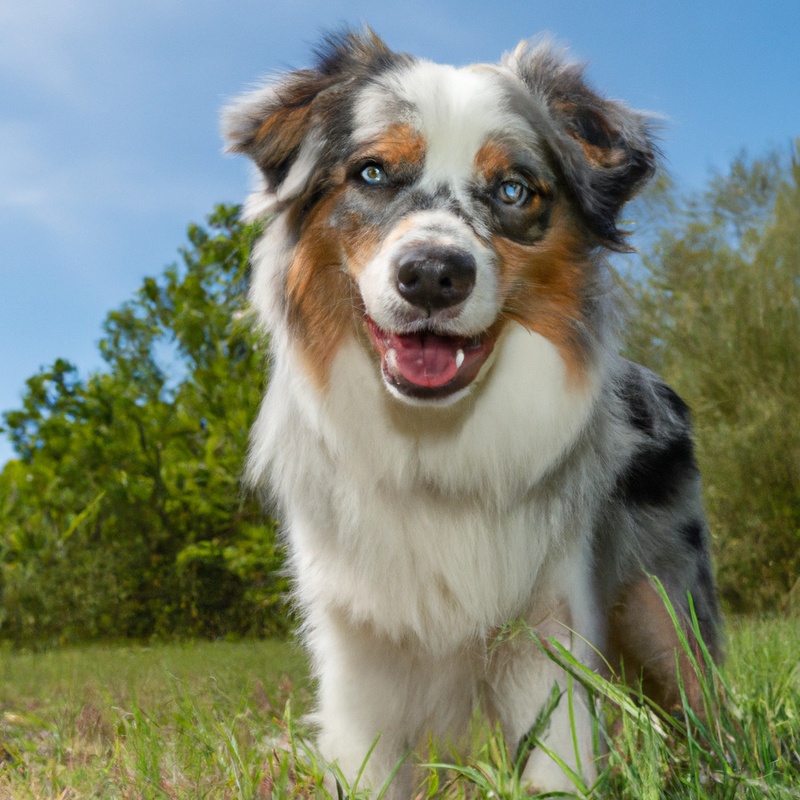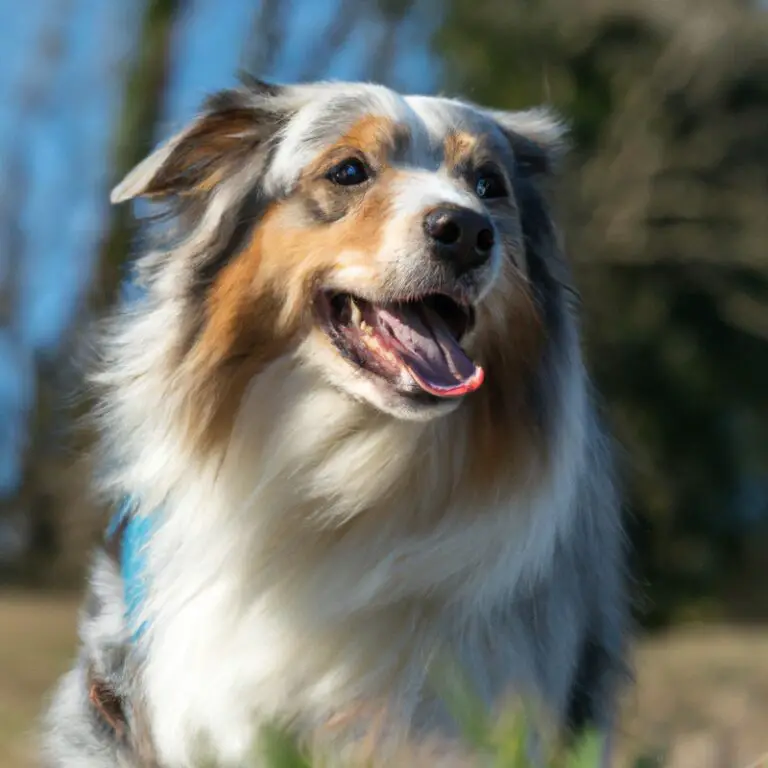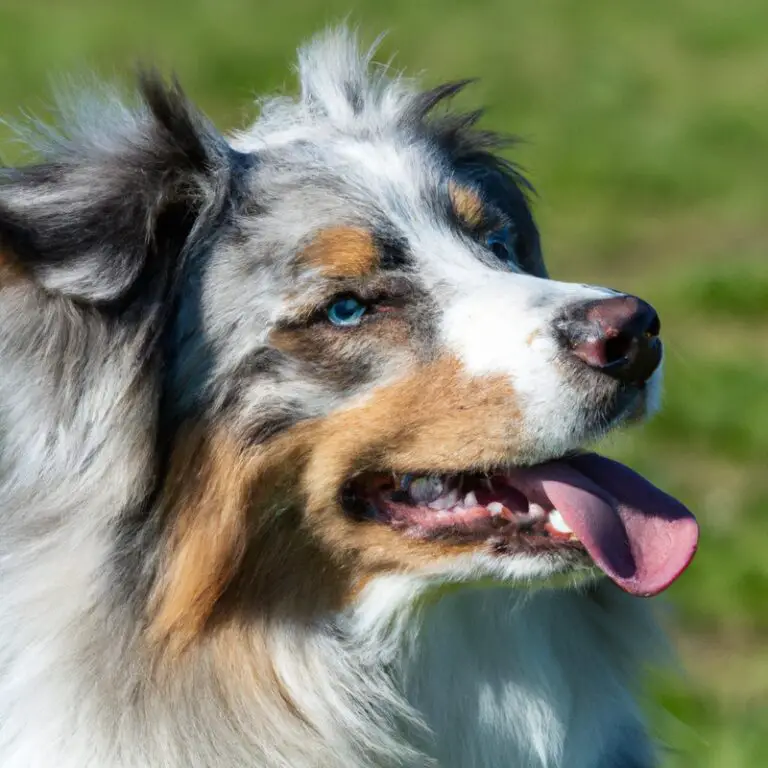How Can I Introduce My Australian Shepherd To New Environments?
Key Takeaways:
- Gradually expose your Australian Shepherd to new environments to help them adjust.
- Use positive reinforcement and rewards to encourage your dog’s confidence in new surroundings.
- Provide mental and physical stimulation to keep your Australian Shepherd engaged and reduce anxiety.
- Seek professional guidance if your Australian Shepherd continues to struggle with adapting to new environments.
Are you a proud owner of an Australian Shepherd? These intelligent and energetic dogs thrive in new environments, but introducing them to unknown territories can sometimes be a daunting task.
Don’t worry, I’ve got you covered! As an expert in dog training and behavior, I’m here to provide you with valuable insights on how to successfully introduce your Australian Shepherd to new places with confidence and ease.
By considering important factors, preparing your furry friend, and utilizing effective training techniques, you’ll ensure a positive and enjoyable experience for both you and your beloved companion. So, let’s dive in and discover the secrets to a smooth transition into new environments for your Australian Shepherd!
| Environment | Introduction Tips |
| 1. Home | – Create a safe and comfortable space for your Australian Shepherd – Gradually introduce them to different rooms – Provide familiar toys and blankets – Use positive reinforcement for good behavior – Gradually increase exposure to guests and visitors |
| 2. Outside | – Start with quiet and familiar outdoor areas – Use a leash to maintain control – Introduce new sounds and smells slowly – Encourage exploration and reward calm behavior – Gradually expose your dog to busier environments |
| 3. Public Places | – Choose quiet and less crowded locations initially – Use a leash and ensure your dog is under control at all times – Gradually increase exposure and visit busier places – Socialize your dog with other friendly dogs – Reward positive behavior during interaction with strangers |
| 4. Car Rides | – Start with short, low-stress trips – Use comfortable and secure travel equipment – Provide familiar toys and treats – Gradually increase the duration of car rides – Associate car rides with positive experiences and rewards |
Factors to Consider Before Introducing Your Australian Shepherd to New Environments
Assessing Your Australian Shepherd’s Temperament and Behavior
Assessing your Australian Shepherd’s temperament and behavior is an important step in introducing them to new environments. It’s essential to understand how your dog typically reacts in various situations.
Observe how they interact with other dogs, animals, and people.
Do they show signs of aggression or fear? Are they easily overwhelmed or overly excitable?
Pay attention to their body language, such as raised hackles or tense muscles, as these can indicate discomfort or anxiety.
Additionally, consider their level of obedience and their response to commands. By understanding your Australian Shepherd’s temperament and behavior, you can better prepare them for new environments and address any potential challenges that may arise.
Recognizing Potential Anxiety Triggers
Recognizing potential anxiety triggers in your Australian Shepherd is essential for creating a positive introduction to new environments. Here are a few signs to look out for:
- Body language: Watch for signs of discomfort such as a tucked tail, lowered ears, or tense body posture. These can indicate anxiety or fear.
- Excessive vocalization: Whining, barking, or growling may be a sign that your Australian Shepherd is feeling stressed or overwhelmed in a new environment.
- Pacing or panting: If your dog is continuously moving back and forth or displaying rapid breathing, it may be an indication of anxiety.
- Aversion to certain objects or locations: Pay attention to how your Australian Shepherd reacts to specific objects or places. If they consistently show fear or avoid certain things, it could be an anxiety trigger.
- Changes in appetite or elimination habits: A sudden loss of appetite or accidents in the house may indicate that your dog is experiencing stress or anxiety.
Remember, every dog is unique, and what triggers anxiety for one may not affect another. It’s crucial to observe your Australian Shepherd’s individual reactions and tailor their introduction to new environments accordingly.

Understanding the Importance of Proper Socialization
Proper socialization is essential for the well-being of your Australian Shepherd. It helps them develop positive behaviors, adapt to new environments, and build healthy relationships with other animals and humans.
Socialization is not only about exposing your dog to new experiences but also ensuring that these experiences are positive and stress-free.
It involves gradually introducing your Australian Shepherd to various stimuli, such as different sounds, smells, and people. By socializing your Australian Shepherd, you are helping them to become confident and well-rounded dogs.
They will be more comfortable in different situations and less likely to develop fear or aggression towards new environments or individuals.
Regular socialization also helps prevent anxiety and behavioral issues, making it easier for you to manage your dog’s behavior in various settings. To properly socialize your Australian Shepherd, start early and be consistent.
Expose them to new environments, people, and animals in a controlled and positive manner.
Use rewards and positive reinforcement to reinforce good behavior. Remember that each dog is unique, so take into account their temperament and comfort level when introducing them to new experiences.
Regular socialization should be an ongoing process throughout your Australian Shepherd’s life.
Consistency is key, so make sure to provide them with regular opportunities to socialize and experience new environments. By doing so, you are setting your Australian Shepherd up for a lifetime of positive experiences and well-adjusted behavior.

Preparing Your Australian Shepherd for New Environments
Gradual Exposure to New Sounds and Stimuli
When introducing your Australian Shepherd to new environments, it’s important to gradually expose them to new sounds and stimuli. Start by exposing your dog to low-level sounds and gradually increase the volume over time.
This can include playing recordings of different sounds or taking your dog to quiet places with mild background noise.
Introduce your Australian Shepherd to various stimuli such as different textures, surfaces, and objects. Start with familiar objects and gradually introduce new ones.
You can also use interactive toys or puzzles to engage their senses and provide mental stimulation.
Remember to observe your dog’s behavior and reactions during the exposure process. If your dog shows signs of discomfort or anxiety, take a step back and proceed more slowly.
Patience and consistency are key in helping your Australian Shepherd adapt to new sounds and stimuli in a positive way.

Familiarizing Your Australian Shepherd with Different Smells
To familiarize your Australian Shepherd with different smells, you can take a gradual approach. Start by introducing your dog to familiar scents in your home or backyard.
You can use scented toys, treats, or even a cloth with your scent.
This will help your Australian Shepherd associate these scents with comfort and familiarity. Once your dog is comfortable with familiar smells, you can gradually expose them to new scents.
Take your Australian Shepherd for walks in different environments, such as parks or busy streets.
Allow them to sniff around and explore new smells, rewarding them with treats and praise for positive behavior. You can also incorporate scent training activities into your daily routine.
For example, hide treats or toys around the house and encourage your Australian Shepherd to find them using their sense of smell.
This will stimulate their natural instincts and provide mental enrichment. Remember to always supervise your dog during scent familiarization exercises and ensure their safety.
If your Australian Shepherd shows signs of discomfort or anxiety, take a step back and go at their pace.
Each dog is unique, and some may need more time to adjust to new smells. By gradually introducing your Australian Shepherd to different smells and providing positive reinforcement, you can help them become more confident and adaptable in new environments.
Positive Reinforcement Training Techniques
Positive reinforcement training techniques are highly effective in introducing your Australian Shepherd to new environments. These methods involve rewarding your dog for desired behaviors, which encourages them to repeat those behaviors in the future.
One technique is clicker training, where you use a clicker to mark the desired behavior and then reward your dog with a treat.
This helps them associate the sound of the clicker with a positive outcome. Another technique is using verbal praise and treats to reward your dog immediately after they exhibit the desired behavior.
Consistency is key in positive reinforcement training.
Be sure to use the same command or cue consistently and reward your dog promptly after they perform the desired behavior. This helps them understand what is expected of them and reinforces their understanding of the behavior.
It’s important to focus on rewarding the behavior you want rather than punishing unwanted behaviors.
Dogs respond better to positive reinforcement, and they are more likely to enjoy the training process and feel motivated to learn. Remember, each dog is unique, so it may take some trial and error to find the most effective rewards for your Australian Shepherd.
Some dogs may respond better to treats, while others may prefer verbal praise or playtime as a reward.
Pay attention to what motivates your dog the most and adjust your training methods accordingly. By using positive reinforcement training techniques, you can create a positive and enjoyable experience for your Australian Shepherd as you introduce them to new environments.
This will help build their confidence and make them more adaptable in different situations.
Introducing Your Australian Shepherd to New Environments
Choosing the Right Time and Place for Introduction
When introducing your Australian Shepherd to new environments, it’s important to choose the right time and place. Timing is key because you want to ensure that your dog is calm and relaxed before the introduction.
Find a time when your Australian Shepherd is well-rested and not hungry or anxious.
This will increase the chances of a positive experience. In terms of the place, start with a controlled environment that is familiar to your dog, such as your backyard or a quiet park.
This will provide a sense of security and decrease the likelihood of overwhelming your Australian Shepherd.
As your dog becomes more comfortable, you can gradually introduce new and challenging environments. Avoid introducing your Australian Shepherd to new environments when they are already stressed or fearful.
This can lead to negative associations and make future introductions more difficult.
Remember, your dog’s emotional well-being should always be a top priority. By choosing the right time and place for introduction, you create a foundation for successful experiences in new environments.
Utilizing Leash Training and Controlled Environment
When introducing your Australian Shepherd to new environments, utilizing leash training and a controlled environment can be very beneficial. Leash training allows you to maintain control and keep your dog close to you, ensuring their safety and preventing them from wandering off or getting into potentially dangerous situations.
It also helps you guide them through new environments and navigate any potential challenges.
By using a leash, you can gradually introduce your Australian Shepherd to new environments in a controlled manner. Start with calm and less stimulating environments and gradually expose them to busier or more challenging settings.
This gradual exposure helps them build confidence and adapt more easily.
A controlled environment means setting up situations where you can manage and control the variables. For example, if you’re introducing them to new people or animals, make sure they are on a leash and introduce them in a calm and controlled manner.
Using a leash also allows you to redirect your Australian Shepherd’s attention if they become anxious or overwhelmed.
By gently guiding them away from potential anxiety triggers or using positive reinforcement techniques, you can help them feel more comfortable and confident in new environments. Remember, practicing leash training and utilizing a controlled environment goes hand in hand with positive reinforcement training techniques.
By rewarding your Australian Shepherd for good behavior and giving them praise and treats, you can reinforce positive associations with new environments and increase their confidence.
So, grab that leash and enjoy exploring new environments with your Australian Shepherd!
Introducing Your Australian Shepherd to New People and Animals
Introducing your Australian Shepherd to new people and animals can be an exciting but important process. Here are some tips to help make the introductions successful:
- Start with familiar faces: Begin by introducing your Australian Shepherd to people and animals they are already comfortable with. This will build their confidence and create positive associations.
- Slow and controlled introductions: When introducing your Australian Shepherd to new people or animals, it’s best to start in a calm and controlled environment. Avoid overwhelming them by gradually exposing them to new experiences.
- Use positive reinforcement: Reward your Australian Shepherd for calm and relaxed behavior during introductions. This positive reinforcement will help them associate new people and animals with positive experiences.
- Practice proper leash etiquette: Keep your Australian Shepherd on a leash during introductions to ensure everyone’s safety. This will allow you to have control over their reactions and prevent any potential conflicts.
- Regular socialization: Consistently expose your Australian Shepherd to different people and animals. This will help them become more comfortable and confident in new social situations.
Remember, every dog is unique, so be patient and understanding during the introduction process. With proper socialization and positive experiences, your Australian Shepherd can develop a happy and friendly demeanor towards new people and animals.
Overcoming Challenges in Introducing Your Australian Shepherd to New Environments
Dealing with Separation Anxiety and Fear
Dealing with separation anxiety and fear can be challenging when introducing your Australian Shepherd to new environments. Here are some tips to help address these concerns:
- Gradual exposure: Start by slowly introducing your dog to new environments and gradually increase their time alone. This will help them feel more comfortable and confident in unfamiliar settings.
- Provide a safe space: Create a designated area in your home where your Australian Shepherd can retreat to when feeling anxious or fearful. Fill it with their favorite toys, bedding, and familiar scents to help them feel secure.
- Establish a routine: Dogs thrive on routine, so establish a consistent schedule for feeding, exercise, and playtime. This will provide a sense of predictability and stability for your Australian Shepherd, reducing anxiety.
- Positive reinforcement: Use positive reinforcement techniques, such as treats and praise, to reward your dog’s calm and relaxed behavior when in new environments. This will help them associate positive experiences with these situations.
- Seek professional help if needed: If your Australian Shepherd’s separation anxiety or fear is severe and affecting their quality of life, consider reaching out to a professional dog trainer or behaviorist for guidance and support. They can provide customized strategies to address these issues.
Remember, every dog is unique, and it may take time and patience to help your Australian Shepherd overcome separation anxiety and fear in new environments. With consistency, positive reinforcement, and understanding, you can help your furry friend navigate these challenges and enjoy new experiences.
Handling your Australian Shepherd’s Reactive Behavior
When it comes to handling your Australian Shepherd’s reactive behavior, there are a few important things to keep in mind. First, it’s crucial to understand the triggers that may cause your dog to react, whether it’s other dogs, strangers, or certain environments.
Recognizing these triggers can help you better manage your dog’s behavior.
One effective approach is to use positive reinforcement training techniques. By rewarding your dog for calm behavior and gradually exposing them to the triggers in controlled environments, you can help them learn to stay calm and respond appropriately.
Consistency in training is key, so make sure to practice regularly.
Another important aspect is leash training. By utilizing a leash and maintaining control in new environments, you can prevent your dog from becoming overwhelmed and engaging in reactive behavior.
This also ensures the safety of other people and animals around you.
If you find that your Australian Shepherd’s reactive behavior is persistent and difficult to manage on your own, don’t hesitate to seek professional help. An experienced trainer or behaviorist can provide specialized guidance and support tailored to your dog’s needs.
Handling reactive behavior requires patience, consistency, and understanding.
With time and effort, you can help your Australian Shepherd feel more relaxed and comfortable in new environments.
Seeking Professional Help if Needed
If you’re struggling to introduce your Australian Shepherd to new environments despite your best efforts, it’s important to remember that seeking professional help is always an option. Sometimes, it can be challenging to pinpoint the exact cause of your Australian Shepherd’s behavior or anxiety in new settings.
A professional dog trainer or behaviorist can provide expert guidance and training techniques tailored to your dog’s specific needs.
They can help you address any underlying issues, such as separation anxiety or fear, and develop a customized plan to help your Australian Shepherd adjust and thrive in new environments. Don’t hesitate to reach out and ask for assistance if you feel that your efforts alone are not yielding the desired results.
Remember, there is no shame in seeking professional help – it’s a proactive step toward ensuring a happy and well-adjusted Australian Shepherd.
Maintaining Positive Experiences in New Environments for Your Australian Shepherd
Consistency in Training and Exposing to New Environments
Consistency in training and exposing your Australian Shepherd to new environments is essential for their well-being and development. By consistently providing them with training and exposure, you are helping them become more adaptable and confident in different situations.
When it comes to training, it’s important to establish a consistent routine.
This means setting aside regular time for training sessions and using consistent commands and cues. By doing so, your Australian Shepherd will learn quicker and be more responsive to your commands.
Exposing your Australian Shepherd to new environments is equally important.
Start by gradually introducing them to new sounds, sights, and smells. This can be done by taking them on short outings to different places and allowing them to explore at their own pace.
By exposing them to a variety of environments, you are helping them become more comfortable and less fearful in new situations.
Remember to always provide positive reinforcement during training and exposure. Praise and reward your Australian Shepherd for good behavior, and avoid punishment or harsh techniques.
This will create a positive association with new environments and reinforce your bond with your furry friend.
Consistency is key, so make sure to maintain a regular training schedule and continue exposing your Australian Shepherd to new environments throughout their life. With time and patience, they will become confident and well-adjusted in any situation.
Providing Mental and Physical Stimulation
When it comes to providing mental and physical stimulation for your Australian Shepherd, it’s important to keep them engaged and active. This helps prevent boredom and can lead to a happier and healthier dog.
Here are some ways you can provide this stimulation:
- Exercise: Australian Shepherds are a high-energy breed that requires plenty of physical exercise. Regular walks, runs, or playtime in a securely fenced area can help them burn off energy and stay physically fit.
- Mental Challenges: In addition to physical exercise, Australian Shepherds also need mental stimulation. Puzzle toys, interactive games, and obedience training can all provide mental challenges that keep their minds sharp.
- Scent Work: Australian Shepherds have a strong sense of smell, so incorporating scent work into their routine can be mentally stimulating. Hide treats or toys around the house or yard for them to find, or try participating in nose work activities or classes.
- Agility Training: Australian Shepherds excel in agility training and competitions. Setting up an agility course in your backyard or attending agility classes can not only provide physical exercise but also mental stimulation as they navigate obstacles and learn new skills.
- Socialization: Allowing your Australian Shepherd to interact with other dogs and people in a controlled and positive manner can provide both mental and social stimulation. Consider scheduling playdates with other friendly dogs or attending dog training classes where they can interact with new people and dogs.
By incorporating these activities into your Australian Shepherd’s routine, you can provide the mental and physical stimulation they need to thrive. Keep in mind that every dog is unique, so it’s essential to pay attention to their individual preferences and adjust activities accordingly.
Remember to always prioritize their safety and well-being while providing a fun and stimulating environment.
Recognizing and Responding to Stress Signals
Recognizing and responding to stress signals in your Australian Shepherd is crucial for their well-being in new environments. Here are some common stress signals to watch out for:
- Panting excessively
- Dilated pupils
- Whining or whimpering
- Trying to hide or escape
- Yawning or licking lips excessively
- Tail tucked between legs
- Trembling or shaking
If you observe these signs, it’s important to respond appropriately. Provide a calm and quiet environment, offer reassurance, and remove any potential stressors.
Give your Australian Shepherd space and time to relax and adjust.
Additionally, it’s crucial to avoid punishment and instead focus on positive reinforcement. Praise and reward your dog for displaying calm behavior.
If your Australian Shepherd continues to exhibit stress signals, consider seeking professional help from a qualified dog trainer or behaviorist.
Remember, your dog’s well-being should always be a top priority.
Final Verdict
Introducing your Australian Shepherd to new environments requires careful consideration and preparation. Assessing their temperament, recognizing anxiety triggers, and prioritizing socialization are crucial factors.
Gradually exposing them to new sounds and stimuli, familiarizing them with different smells, and utilizing positive reinforcement training techniques are effective preparation strategies.
When introducing them to new environments, choose the right time and place, utilize leash training, and gradually introduce them to new people and animals. Overcoming challenges such as separation anxiety and reactive behavior may require professional help if needed.
Maintaining positive experiences through consistency in training, mental and physical stimulation, and responding to stress signals is vital for their overall well-being.
By following these guidelines, you can set your Australian Shepherd up for success in any new environment.







